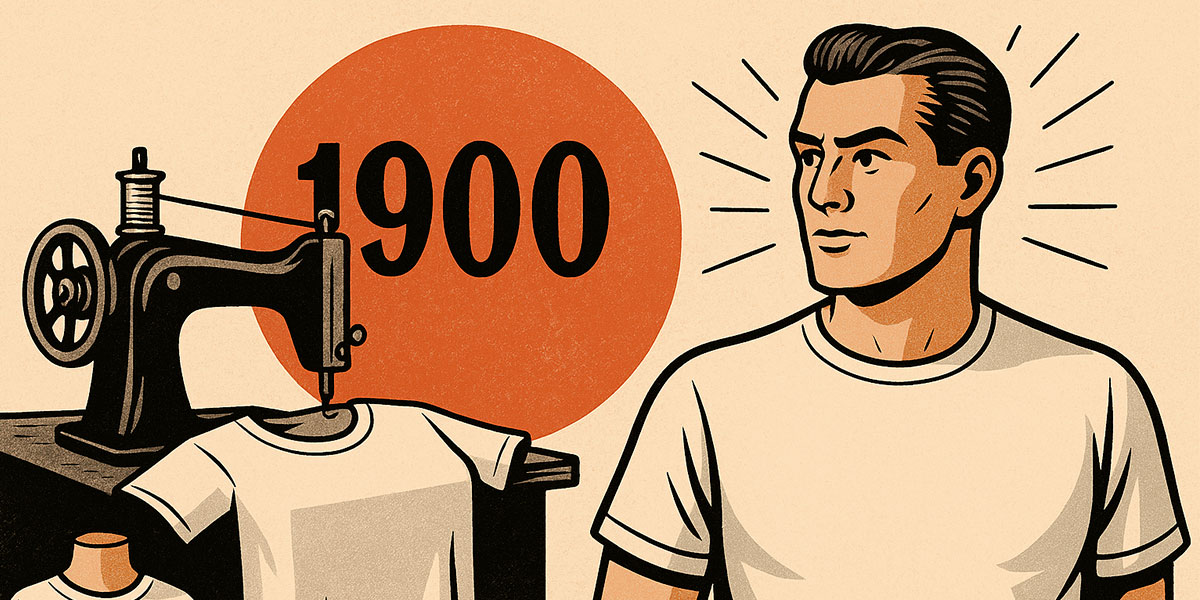How the T-Shirt Was Invented

You probably have at least a few in your closet. You wear them at home, at parties, or even to work. But have you ever wondered how the humble T-shirt came to be? It’s one of the most iconic and universal pieces of clothing — yet its origins are anything but ordinary. Let’s explore the surprising invention and evolution of the T-shirt.
1. The T-Shirt Started as… Underwear?
Yes, really. The T-shirt’s earliest ancestor was an undergarment worn by European men in the 19th century. It was a one-piece union suit — basically a buttoned onesie — worn under formal clothes.
But in the early 1900s, the U.S. Navy began issuing lightweight cotton undershirts with no buttons and short sleeves. These were easier to wear and clean in tropical climates. This simple design, shaped like the letter “T,” laid the foundation for what we now call the T-shirt.
Fun Fact: T-shirts were originally worn to protect uniforms from sweat, not as standalone clothing.
2. The Name "T-Shirt" First Appeared in the 1920s
According to the Merriam-Webster Dictionary, the term “T-shirt” was first recorded in 1920. F. Scott Fitzgerald even used it in his novel This Side of Paradise.
By this time, T-shirts were gaining popularity among working-class Americans and young boys for their comfort and practicality. But they still weren’t considered “real” outerwear — yet.
3. Hollywood Made T-Shirts Cool
The moment the T-shirt stepped into the spotlight was in the 1950s, thanks to Hollywood. When Marlon Brando wore a tight white T-shirt in A Streetcar Named Desire (1951), and James Dean followed in Rebel Without a Cause (1955), the T-shirt suddenly became rebellious, sexy, and stylish.
🎬 Cool Fact: After Brando’s appearance, T-shirt sales skyrocketed across the U.S.
4. The 1960s Brought Tie-Dye, Protest Tees & Art
By the 1960s, the T-shirt became a canvas for self-expression. Protest slogans, psychedelic art, and tie-dye patterns turned T-shirts into wearable statements during the civil rights movement, anti-war protests, and the rise of rock ‘n’ roll.
That’s when the T-shirt became more than just clothing — it became a voice.
Artistic Fact: The first graphic tees were screen-printed by hand in small batches, making them truly unique.

5. T-Shirts Go Global (and Digital)
In the late 20th century, T-shirts exploded into every corner of the fashion industry — from haute couture to budget basics. With the rise of e-commerce and print-on-demand platforms in the 2000s, anyone could create and sell their own T-shirt designs globally.
Today, the T-shirt is worn by presidents, punks, influencers, and everyone in between. It's a fashion chameleon that reflects culture, identity, and creativity.
Final Stitch: From Humble Beginnings to Global Stardom
So the next time you slip on your favorite tee, remember: you’re wearing a piece of history that began in a sailor’s laundry bag and rose to become a global icon.
And if you're looking for unique, high-quality T-shirts, don't forget to check out our latest collection — where comfort meets style, and history meets modern fashion.

 02.08.2025
02.08.2025

















